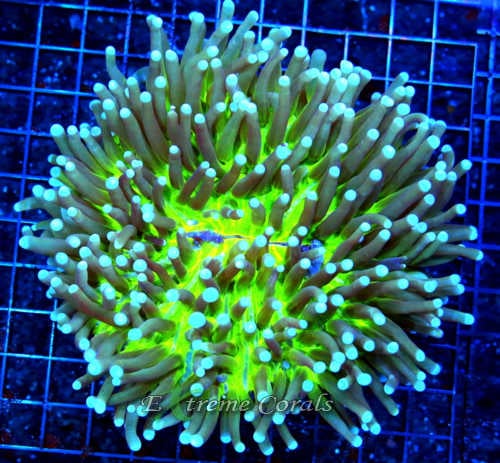Extreme Corals News and Updates
How to Care for Long Tentacled Plate Coral in a Reef Tank
Find out how to properly care for your new Long Tentacled Plate Coral with this "how-to" guide on the requirements for healthy Long Tentacled Plate Coral from the #1 place to buy corals online!
Read along to find out the Lighting, Water Flow, Feeding, Placement & more when it comes to the care of your new Long Tentacled Plate Coral
by scott Shiles • February 27, 2023
Long tentacled plate coral (LPS), also known as Heliofungia actiniformis, is a popular coral species among reef aquarists. This coral is prized for its attractive appearance, which includes long, flowing tentacles that sway in the water current, and its ability to grow into large colonies. However, caring for long tentacled plate coral can be a challenge, especially for those who are new to reef tank keeping. In this blog, we will discuss how to care for long tentacled plate coral in a reef tank.
Water parameters
Long tentacled plate coral requires a stable and pristine environment to thrive. It is important to maintain appropriate water parameters, including temperature, pH, salinity, and nutrient levels. The ideal temperature range for this coral is between 76°F and 82°F, and the pH should be maintained between 8.1 and 8.4. Salinity should be kept between 1.023 and 1.025, and nutrient levels should be kept low. Water changes should be performed regularly to maintain water quality.
Lighting:
Long tentacled plate coral requires moderate to high lighting levels. It is recommended to use high-quality LED lighting fixtures that can provide the right spectrum and intensity for the coral. The lighting schedule should mimic natural daylight cycles, with a total photoperiod of 8 to 10 hours per day. It is also important to provide shading for the coral during the hottest part of the day to prevent bleaching.
Flow:
Long tentacled plate coral requires moderate water flow to keep its tentacles moving and prevent debris from settling on its surface. The water flow should be directed towards the coral, but not too strong to cause damage to its delicate tissue. A powerhead or wavemaker can be used to create a gentle and random flow pattern.
Feeding:
Long tentacled plate coral is a photosynthetic species and obtains most of its nutrition from photosynthesis. However, it also benefits from supplemental feedings of small pieces of meaty foods such as mysis shrimp, brine shrimp, or chopped squid. It is important not to overfeed the coral, as excess nutrients can lead to algae growth and poor water quality.
Placement:
Long tentacled plate coral should be placed in a stable location in the aquarium, preferably on a flat rock or piece of coral rubble. It should not be placed too close to other corals or in direct flow from a powerhead. It is also important to provide adequate space for the coral to grow, as it can develop into a large colony over time.
Monitoring:
It is important to monitor the health of the long tentacled plate coral regularly. Signs of poor health include closed or retracted tentacles, discoloration, tissue recession, or the presence of pests or diseases. If any of these symptoms are observed, immediate action should be taken to prevent further damage. It is also recommended to quarantine any new additions to the tank before introducing them to the coral to prevent the spread of diseases.
In conclusion, long tentacled plate coral can be a rewarding and attractive addition to a reef tank if proper care is taken. Maintaining stable water parameters, appropriate lighting and flow, and providing adequate feeding and placement can help ensure the health and longevity of this beautiful coral. Regular monitoring and prompt action in case of any issues can also help prevent problems and maintain a healthy aquarium environment.

